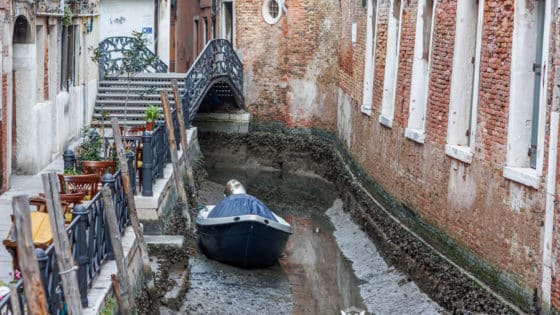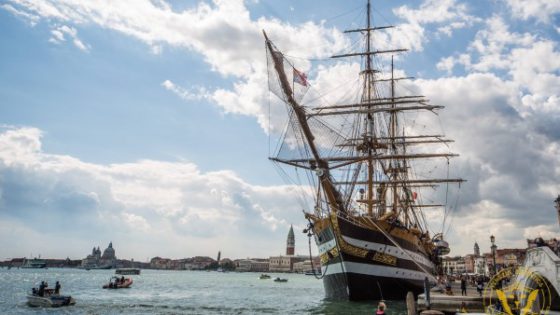Protests against cruise ships in Venice made it to the world’s largest and most reputable news networks many times between 2010 and 2020.
But why?
The relationship between Venice, the Venetians, and the cruise ships docking in Venice is a very sensitive subject, so it is critical to analyze and break it down in order to understand it better.
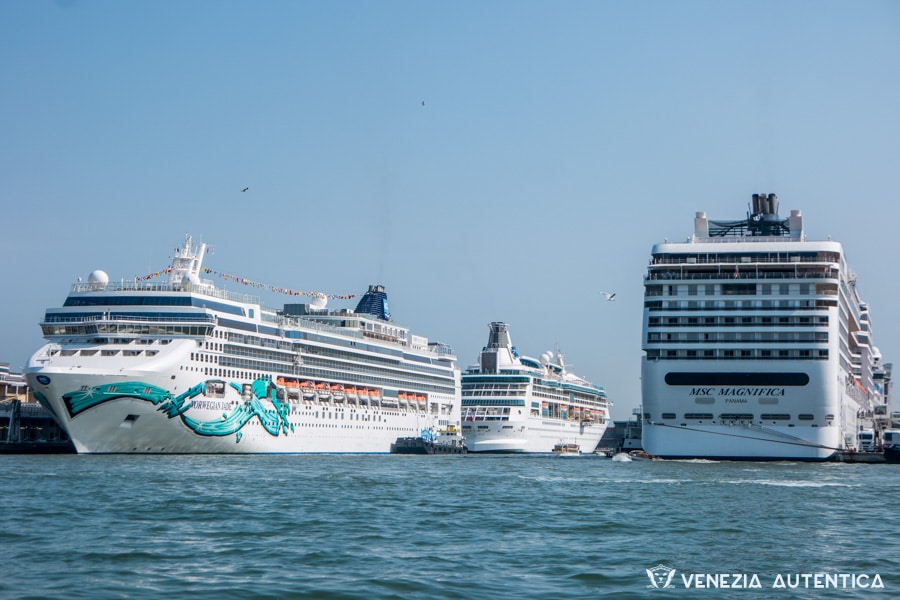
As one might expect, when it comes to Cruise Ships or “Grandi Navi” (literally “Big Ships”), Venetians are divided into two groups: those in favour of Big Ships and those opposed to Big Ships entering the Venetian Lagoon.
Both groups have reasons to justify their positions, so we’ll stick to listing facts as the best way to discuss this difficult issue.
When it comes to cruise ships in Venice, size matters
In most cases, the disparity in size between the ships and Venice creates the most direct and strong impression on onlookers.
Is this perception based on facts? Are cruise ships truly too big in comparison to Venice?
The size of Venice and its Lagoon, and the number of inhabitants
A few things to know to understand the (tiny) size of Venice:
- The total area of Venice is slightly less than 8km2, roughly twice the size of Central Park in New York.
- The Saint Mark’s Bell Tower, Venice’s tallest building, stands 99 meters tall.
- The majority of buildings in Venice are under 20 meters tall.
- The lagoon in which Venice is located has an average depth of around 1.2 m.
- Venice has a population of fewer than 50.000 inhabitants.
The size of cruise ships
Here’s some information to understand the size of modern cruise ships:
- Since the first purpose-built cruise ship in 1970, ship sizes have steadily increased.
- The first cruise ship, named “Song of Norway,” was built in 1970. It was 188m long, 24m wide, weighed 18.000t, and could accommodate 1.100 people.
- The “Harmony of the Seas,” built in 2016, is 362.15 meters long, 66 meters wide, and 70 meters tall, with a draught of 9.3 meters, a gross tonnage of 226.963 tons, and a capacity of over 9,000 people. The gross tonnage has increased by more than 1300 percent compared to the “Song of Norway,” or 500 percent compared to the Titanic.
- 38 of the 47 new cruise ships scheduled to be built by 2021 will weigh more than 100,000 tons.
A first decree, in 2013, prohibited ships with a gross tonnage above 96.000t from passing through the Saint Mark’s Basin.
If you’re wondering how big a ship of 96.000t could be, consider the MSC Magnifica. This ship measures 294 meters in length, 32 meters in width, has an 8-meter draft, can carry up to 4.600 passengers,… and is just under the 96.000 tons limit!
Finally, in 2021, the Italian Government passed a new decree that prohibited ships above 25.000 tons to pass right in front of Saint Mark’s in Venice.
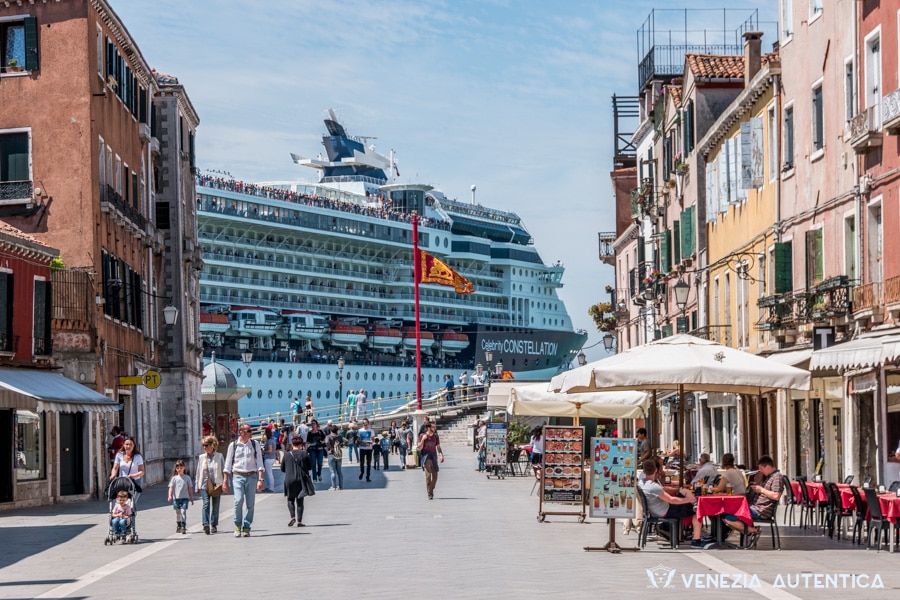
Want more tips, tools and stories from Venice, Italy?
We're on a mission to make it easy and fun to discover and support the authentic Venice. Try our email and see for yourself!
Pollution
While the size of cruise ships is immediately apparent to our senses, their impact on the local environment cannot be seen with the naked eye but can be measured.
The city of Venice is currently not compliant with EU directives regarding the location and number of air quality control centres. There should be more air quality control centres in Venice than there currently are.
Nonetheless, the data available already provides an idea of the impact and effects of pollution caused by large ships.
Venice background pollution
Consider two important facts to understand many Venetians’ confusios about Venice’s extremely poor air quality:
- The entire surface of Venice is inaccessible to cars, making it the world’s largest pedestrian city.
- Venice is the Italian leader in ecological mobility due to its public vs. private transportation ratio: a much higher percentage of people use public transportation compared to the rest of Italy, reducing each individual’s environmental footprint.
Nonetheless, the background pollution in Venice’s air is higher than it should be. The main contributors are public transportation boats and sightseeing boats known as “granturismo”: water transportation regulations are far laxer than those on land!
Indeed, maritime companies are permitted to use low-cost fuel with a high sulfur content (1.500 times that permitted for land vehicles!) and are under no obligation to use a particulate filter. Filters that reduce emissions by 90-99% would cost 5.000 € per boat, a sum that could be repaid with less than 600 one-way tickets.
The impact of cruise ships on the air quality in Venice
According to the Italian Senate, […the regional agency for environmental prevention and protection has demonstrated that the cruise ships traffic in Venice is the major responsible for atmospheric pollution…], [… every ship pollutes as much as 14.000 cars, also while being docked. Moreover, an estimation performed by the Veneto Cancer Institute states that “in Venice and Mestre there is a statistically significant excess of lungs cancer compared to the rest of Italy“].
This is an extract of Act n. 1-00199, published on the 13th of December 2013 by the Senate of the Italian Republic.
It is worth noting that this refers to fine dust: the situation for other highly polluting elements is even worse!
Official measurements in Venice are performed in Sacca Fisola, a low-populated area upwind of the harbour.
EU directives, however, impose at least two monitoring centres in the heart of populated areas, and Venice doesn’t comply with the law on this matter.
Ambientalists turned towards the environmental organization NABU, to ask for measurements to be performed in the heart of the city, which is downwind the harbour: those values turned out to be 5 to 6 times higher than the already alarmingly high measurements in Sacca Fisola.
NABU’s measurement registered both the background pollution in different parts of the city and the spike concurrently to the passage of cruise ships. The level of PM 2,5 after the passing of a cruise ship Nave reached 150 times the level of PM 2,5 of clean air.
“I know there are regulations out there!”, you might think. Yes, there are, but not for everybody.
Since the enforcement of the standard Euro V in 2009, the max amount of sulfurs in fuel was reduced to 10 ppm, or 0,001%.
That’s great! This, however, counts only for land vehicles such as cars and trucks.
The fuel allowed on ships at sea can contain up to 3,5% sulfur: that is 3.500 more sulfur than the one allowed in fuel for land vehicles.
While moored, ships are allowed to use fuel with up to “only” 1,5% sulfur, which is still 1.500 times more polluting than the fuel used by cars and trucks.
Do ships burn fuel while docked in the harbour?
Yes, they do, because the port in Venice (as most ports around the world) can’t provide enough electricity for keeping the services and amenities running onboard the ships. Therefore, ships keep their engines running to produce electricity.
A cruise ship docked in Venice keeps the motor running 24h a day and burning a fuel that is 1.500 (one-thousand five-hundred) times more polluting than car fuel.
Many nations worldwide, including Italy, lack laws enforcing the use of filers on cruise ships. As a consequence, many cruise ships don’t make use of particulate filters and catalyst converters, which would decrease emissions by (over) 90%.
The cost of filters, called scrubbers, for a medium-sized cruise ship is around 1 million €. Considering that the average cost of a cruise ship is around 350 million, the cost for the purchase of filters would represent just 0,3% of the total cost.
There are two main reasons for which cruise companies chose not to make use of scrubbers:
- Filters would take up space that companies prefer to reserve for entertainment instead.
- The current laws allow cruise ships to approach the coast even without filters if they have “clean” fuel. Clean fuel on ships, however, contains up to 1500 times more sulfur than land fuel does.
In order to answer the concerns raised by Venetians regarding the pollution caused by cruise ships, companies have signed and publicized their “Venice Blue Flag” voluntary agreement, with the promise to make use of BTZ fuel when approaching Venice. BTZ fuel is an oil with less than 0,1% sulfur, far below the Italian national requirement of <1,5% when in urban areas.
We salute with excitement such a of voluntary agreement!
Unfortunately, despite their announcements, upon inspection by the port authorities companies have been fined for not even respecting the national requirements and using instead fuel containing 2,8% sulfur (Venice, 18/07/2015). How reliable!
Let’s make this last information very clear:
- Cars fuel has a 0,001% limit
- The Italian Law imposes a 1,5% limit on ships within 12 miles from the coast (the limit raises to 3,5% beyond 12 miles)
- Cruise ship companies promised to respect a voluntary 0,1% limit
But upon inspection, companies were found to be using fuel with 2,8% sulfur, a value 2.800 times higher than the one allowed for cars and well above the Italian Law.
Effects on the local environment
Besides the aforementioned air pollution, there are several other effects caused directly by Cruise Ships or human intervention looking to accommodate ever growing cruise ships in the lagoon.
Effects on Venice
Three main impacts of cruise ships in Venice are the displacement of water and the consequent erosion of the lagoon, the corrosion caused by pollutant, and the digging of canals in the Venetian Lagoon which is a very delicate environment.
- Displacement is the mass of water moved by the submerged part of the ship, and it’s the parameter that allows a ship to float. Gross Tonnage, which is what the Laws refer to, is the measure of the volumes of a ship, not its mass. There is no direct relationship between Gross Tonnage and Displacement. However, the displacement in cruise ships is roughly around 50% of its gross tonnage: a 100.000t ship will move 50 million litres of water. Even though performed relatively slowly, the movement of such a massive amount of water erodes the hundreds and even thousands of years old foundations of the palaces and the streets of Venice. Big ships are not the only cause of this phenomenon, of course. Heavy (and too-fast-moving) motor traffic is to be blamed also for the holes (yes, real holes) being carved in the foundations.
- The pollution caused by the fuel used by cruise ships as well as motorboats mixes with the air produces NO2, CO2, and SO2 which damage severely not only the “natural” environment and the health of living beings but also corrodes severely the works of art and the palaces of Venice.
- The heavy digging of the canals to let Big Ships into the Venetian Lagoon increases the amount of water that enters and exits the lagoon during tides. The direct and most obvious effect on the city of Venice is the increase in number and intensity of High Waters, or Acque Alte, which partially flooded the city.

Effects on the Lagoon
We mentioned above the consequences that digging canals have on the city of Venice. What were the effects of human intervention on the lagoon?
- The lagoon used to have an average depth of 40cm until less than 100 years ago. The digging and deepening of canals led to the erosion of 70% of the natural sediments and an increase in depth to an average 1,2m… that’s an increase of +200%.
- The increased amount of water led to the erosion of the sandbanks of the lagoon. Sandbanks are home to Venetian wildlife: fishes, birds, small rodents, and plants. Since the digging of the canals started, the habitat of local species has decreased drastically.
Dangers and risks of collisions
The most immediate fear of Venetians and Venice lovers when it comes to the passing of Big Ships in the heart of Venice, is the risk of collision.
The rules established to reduce this risk are very strict and applied with great attention:
- Every cruise ship is halted at the entrance of the lagoon of Venice, is boarded by two captains of the Venice Port and is manoeuvred all the way until it is safely docked in the harbour.
- Every cruise ship is preceded and followed by two tugboats that can intervene in the case of an emergency.
These rules have indeed granted great safety to the city of Venice over the years, but have not prevented entirely accidents. Some of them could have been devastating to the city.
Will cruise ships tragedies no longer occur in Venice?
No, only forbidding cruise ships to pass in the basin of Saint Mark will assure Venice to be completely safe from cruise ship related accidents.
Just like everything else, from trains to planes, the risks are calculated, reduced as much as possible, and often prevented. Yet, accidents do happen, it’s a matter of statistics and probability. Whether a mechanical or electrical dysfunction, terrorism, human error or deliberate choice, tragedies are a reality.
In the past years, between 500 and 600 cruise ships docked yearly in Venice. This means that cruise ships cross the Basin of Saint Mark between 1.000 and 1.200 times every year, just in front of the Doge Palace on one side, and San Giorgio on the other side. In 20 years, big ships will have passed 20 to 24.000 times through the heart of Venice. One, only one, single accident in the Basin is one of those 2o.000+ crossings could mean a tragedy from which Venice would never recover.
The possibility of accidents is small, but the consequences would be devastating.
Up to this point, all considerations speak clearly against Big Ships.
Why then, are there people in favor of cruise ships?
Impact of the cruise ship business on the local Economy
The Venice Cruise Ship Terminal employs 4-5.000 workers locally, which is over 4% of the workers of Venice, and a total of 7-8.000 workers in all of Italy. The economic impact of the port represents 3-4% of the Venice municipality GDP.
Venice acts mainly as a homeport. A homeport is a port from which a cruise ships’ journey start or ends. Cities that have home ports benefit from greater economic expenses than cities working as transit ports do since it is more likely for cruisers to be spending one night in town before or after their cruise. In 2015, the port of Venice has welcomed close to 1,6 million passengers. The above data and its implications were taken from a report about the benefits of the port, commissioned and funded by the Venetian port itself.
On the other hand, since Venice has experienced a sudden increase of cruise passengers, an overwhelming number of souvenirs shops and low-price-and-quality restaurants have opened, targeting day (or hour) trippers. This kind of business has contributed greatly to the increase of rents and the disappearance of many local shops and activities, as well as artisans’ shops and authentic traditions.
Impact of the Cruise Ships on the National Economy
An important business connected to the cruise ships industry is the making of these big ships. The Italian public company Fincantieri is one of the biggest shipbuilding companies in the world, specializing in cruise ships, warships, and 60+m yachts. It has several construction yards in Italy, as well as in the U.S., Brazil, Norway, Romania, and Vietnam. One major construction point is in Marghera (Venice), and it gives work to thousands of workers and 350 businesses. The number of subcontractors increases this industry’s relevance even further.
Fincantieri in 2015 employed directly 7.700 people in Italy and over 22.000 people all around the world, generating revenues of 4,2 Billion €.
It is clear that a part of Italy’s economic interests and job opportunities are tightly bound to the cruise ships business.
Current situation and Government interventions
Laws and Decrees
Technically, since 2013 a Decree called Clini-Passera prohibits big ships over 40.000t to pass by the basin of Saint Mark. Only technically though, since the decree also requires the presence of alternative routes for ships over 40.000t, in order to be effective. As long as the city of Venice will not provide alternatives, this limit is automatically increased to 96.000t. Before 2013, the upper limit used to be 130.000t.
This situation, however, is probably better than if the 40.000t limit would be respected since, currently, the only ships small enough to respect that limitation are old ships with obsolete engines. These “small” big ships might indeed look less invasive to the eye, yet they pollute the air more than bigger and more modern ships do.
Until early 2021, the only limitations to cruise ships passing through the basin of Saint Mark are the use of fuel with less than 1,5% sulfur (1500 times higher than the percentage allowed on land) and a gross tonnage below 96.000 tons.
That did not satisfy civil society groups who demanded cruise ships be banned from passing through the heart of Venice. Indeed, ships up to 96.000 tons still represent a massive size compared to the city’s dimensions.
At the same time, the 96.000t limit did not satisfy cruise companies, since most of the new ships being built were over 100.000 tons and wouldn’t be allowed to pass in front of Venice. Seeing Venice from above was considered to be the highlight of the cruise ship journey, and is, therefore, the strongest cruise ship ticket selling argument.
Finally, in 2021, things changed:
From the 1st of August 2021, ships weighing with a size above 25.000 tons can no longer pass in front of Saint Mark’s Square!
In 2021 some things changed for Cruise Ships in Venice
A new Italian Law passed in July 2021 stated that ships above 25.000 tons can no longer pass in front of Saint Mark’s Square starting August 1st 2021!
This, however, does not mean that cruise ships can no longer enter the Venetian Lagoon.
On the contrary, the local and national administrations are considering increasing the width and depth of an existing canal inside the Venetian Lagoon to let much bigger cruise ships dock in Marghera, nearby Venice.
Therefore, while we welcome the new Law, it only solves one problem: the risk of collisions.
The huge impacts of cruise ships on our delicate local environment and the enormous pollution caused are not addressed at all.
Projects and proposals
Despite the new law of 2021, the Italian Government is taking into account three proposals to improve to the current situation.
Two of them, called Contorta Project and Trezze Project, focus on the digging of existing canals in the Venetian lagoon;
The third, called the Venis Cruise Project, focuses on building a new docking terminal at the entrance of the Lido channel connecting the Adriatic sea to the lagoon.
Increasing the width and depth of canals in the Venetian lagoon is fiercely opposed by environmental groups since it will alter and worsen, once more, the fragile state of the Venetian lagoon. In order to make big ships pass, the canals would be dug a dozen meters deep, allowing a much greater amount of seawater to enter or exit the lagoon during tides. The digging of one of these canals would result in the destruction of even more sandbanks, or “barene”, and an increase in the frequency and intensity of High Water, or Acqua Alta, in Venice.
The creation of a new docking terminal is opposed for several reasons. From a logistic point of view, the common remark is that it will be necessary to create yet another means of transportation for millions of people from the cruise terminal to the centre of Venice. Cruise ships oppose this project. A new docking terminal would prevent companies to sell the view-of-Venice-from-above, and would spoil the investments made during the past decade to become the majority shareholder of the Venice Port.
A further project suggests cruise ships should make use of the already existing “oil canal” or “Canale dei Petroli”, which is used since 1969 by mercantile ships to reach the industries of Marghera. This project would require no intervention on the Venetian Lagoon, but the making instead of a new Port in Marghera and the conversion of the current Port into social housing. The Marghera Port would be the only location adapt for cold-ironing, or shore connection, providing enough electrical power to docked ships, making it possible for their main and auxiliary engines to be turned off, dramatically cutting the cost of air pollution.
Opinions
We tried to provide you with plenty of information to describe the relationship between Venice and the Big Ships. Whichever is your position on this matter, we respect it.
The opinion of others
We understand the problems that would be caused by posing a limitation to cruise ships, and we understand that several people are bound to this business and depend on it. We respect those who strongly support the cruise ship business as it currently is.
We are aware that many people depend on the activities coming from the Venice Port, and that the ever-growing protests of the local communities are felt like a great threat and danger to their jobs.
In a land where unemployment is high, pay is low, and social help is less-than-ideal, this is exactly the leverage used by those who could make a change but wish instead to keep things as they currently are, only to increase their profit despite damaging severely the health of the local population and the environment.
Our Opinion
We are very critical of the current situation.
We just can not and will not accept the great, constant and terrible pollution caused by these ships and the promotion of mass tourism that contributes to the disappearing of local businesses and authentic shops in favour of mass-produced plastic souvenirs that target day-trippers.
We understand and respect the importance of this business and the jobs it generates but we believe it must change in order to respect something that matters more than the profit of a few: the health of all the Venetians, the protection of Venice, and the respect of the environment.
We have a dream
We wish for the preservation of the current jobs, but we also wish for some major changes that will respect Venice, the lagoon, and the Venetians.
Which changes do we believe should absolutely be undertaken?
- Ships should be obliged to use filters.
- Close to cities, fuel allowed on ships should respect the same parameters as the one allowed on land.
- Once docked, ships should switch off their motors and receive electrical power from the Port itself.
Ships should not pass in front of Saint Mark. Entertainment and profit should not win over safety.- No new canals should be dug or enlarged. The Venetian Lagoon is delicate and should be preserved.
We believe in our dreams, and we will try to push for a change in every way we can.
Congratulations on making it through this long and technical article!
If you’re eager to learn more about Venice as well as to find great information to plan your visit to the city while making a positive impact on the local community, check out the following resources:
I'm visiting Venice. Why should I follow your recommendations?
The way you visit Venice has an impact both on the quality of your experience and on Venice itself. Chilling, exploring, shopping, eating and drinking where the locals do, can make a huge impact both on the memories you bring home and on the local economy and community.
Home >> Venice and Venetians >> Venice Explained >> You’re Here
Facts, Curiosities, History of Venice, Italy
More about life in Venice, Italy

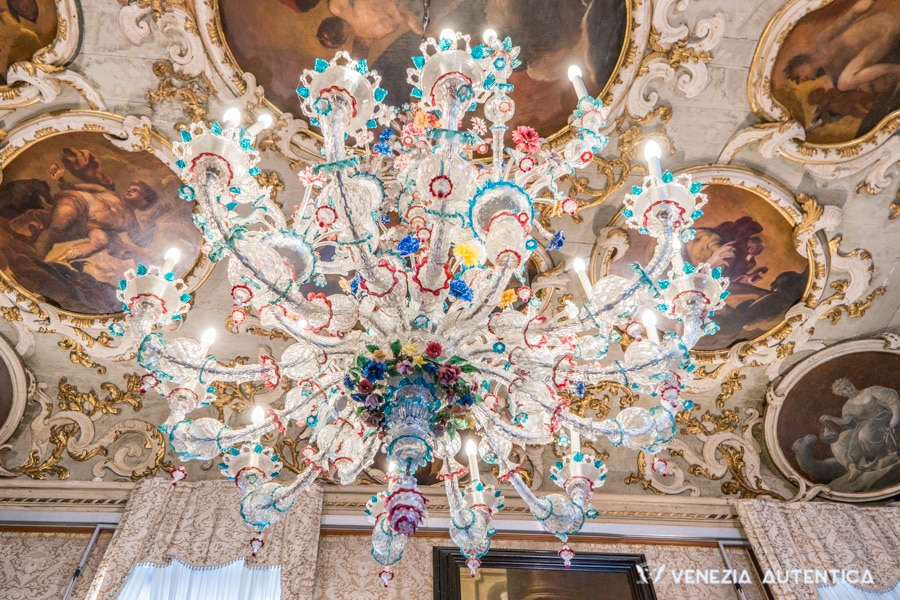
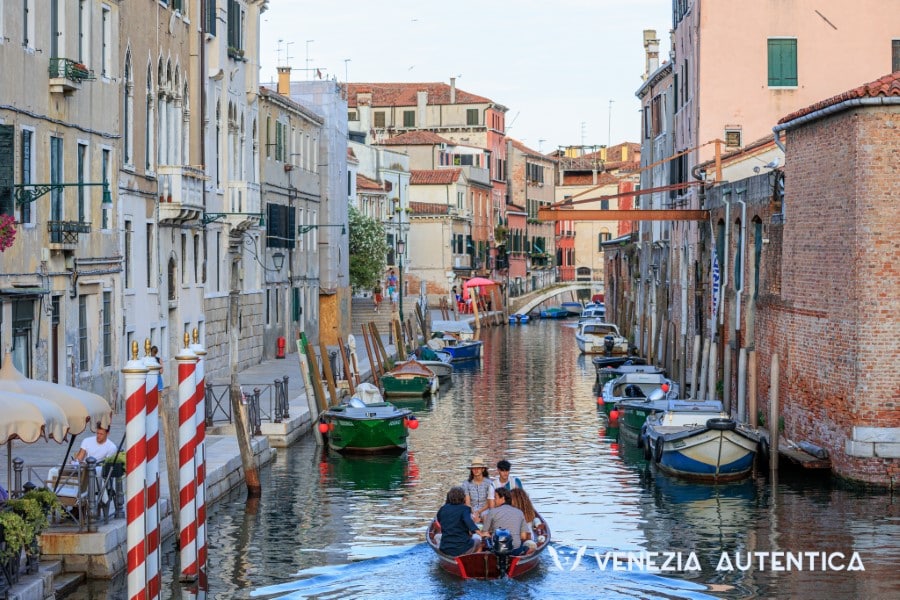

![From a local event to an international rowing appointment in Venice, Italy: La Vogalonga [VIDEO+PHOTO] - Venezia Autentica | Discover and Support the Authentic Venice From a local event to an international rowing appointment in Venice, Italy: La Vogalonga [VIDEO+PHOTO] - Venezia Autentica | Discover and Support the Authentic Venice - Some people in Venice love cruise ships, many hate them. What's the truth about them and why is everyone speaking about cruise ships in Venice?](https://veneziaautentica.com/wp-content/uploads/2016/05/0i5c0448-custom-560x315.jpg)
